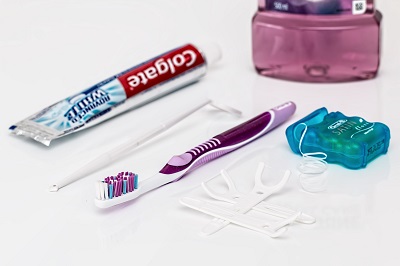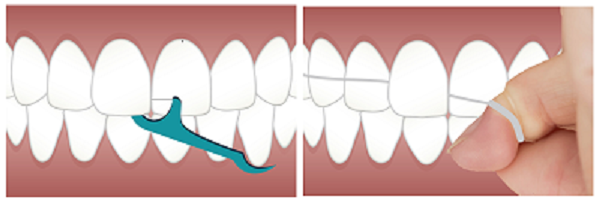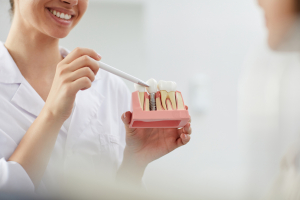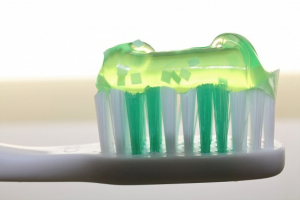Dental floss or Waterpick?
When I recently went to see my friend, I spotted one of the latest innovations in the field of dental care for the first time. Initially, I though that I was looking at an electric toothbrush, but then I noticed the attached water tank which did not fit into the picture. Later, I realized that it had been a waterpick – a fairly novel device focused on keeping the interdentium (the space between adjacent teeth) clean. “How interesting.” I thought and made a mental note to do some more research on waterpicks when I got back home.
What is a Waterpick?
While most people concentrate on the surface areas of their teeth when brushing, thoroughly and regularly cleaning the spaces in between adjacent teeth, where food leftovers can accumulate, is also a crucial part of successful dental care. Neglecting these “hidden” areas for too long can result in gum inflammations and even tooth decay.Therefore, dentists advise their patients to use dental floss on a daily basis – either from a roll or attached to a plastic stick (a so-called “placker”). Over the past few years, an increasing number of medical equipment manufacturers have started offering novel products called waterpicks that use water jets to remove plaque from dental surface areas. Waterpicks generally fall into one of the following categories:
- Waterpick with water-tap connection – Directly connected to a water-tap via a flexible tube and often less expensive than stationary waterpick models
- Stationary Waterpick – Have built-in water tanks and do not need a direct connection to a water-tap, though they are reliant on electricity (i.e., need a power socket nearby)
- Mobile Waterpick – Battery-powered and equipped with compact water tanks
Additionally, most waterpicks have adjustable water jets that can be focused on single spots, if that should be necessary to remove especially tenacious food remnants. Waterpicks should be used after every brushing except in cases of gum inflammations, periodontitis, and small wounds.
Is a Waterpick better than traditional dental floss?
In short – No.Though Waterpicks can provide for a very solid cleaning effect even between adjacent teeth, dentists still advise for the use of dental floss to remove all remaining tenacious plaque remnants in those spaces. Therefore, the waterpick is considered to be a perfect supplement (not replacement) to dental floss and a toothbrush, as it offers the following key advantages:
- Removes leftover food
- Reduces bad breath
- Alleviates gum inflammations
- Cleans not only the teeth but also the interdentium (i.e., spaces between adjacent teeth)
- Requires less application time than dental floss (i.e., is faster to use)
How much do dental floss and Waterpicks cost?
Nowadays, reliable dental floss options are available virtually everywhere and usually appear in one of two major forms – in rolls or in the form of so-called „plackers“.
Fortunately, all forms of traditional dental floss are quite affordable and are therefore easily available for people at almost any income level:
- Traditional Floss Options: up to EUR 10
- Novel Waterpick: between roughly EUR 30 and EUR 100 incl. shipping
For more interesting stories, check out the DentalAce blog and join our online community.


